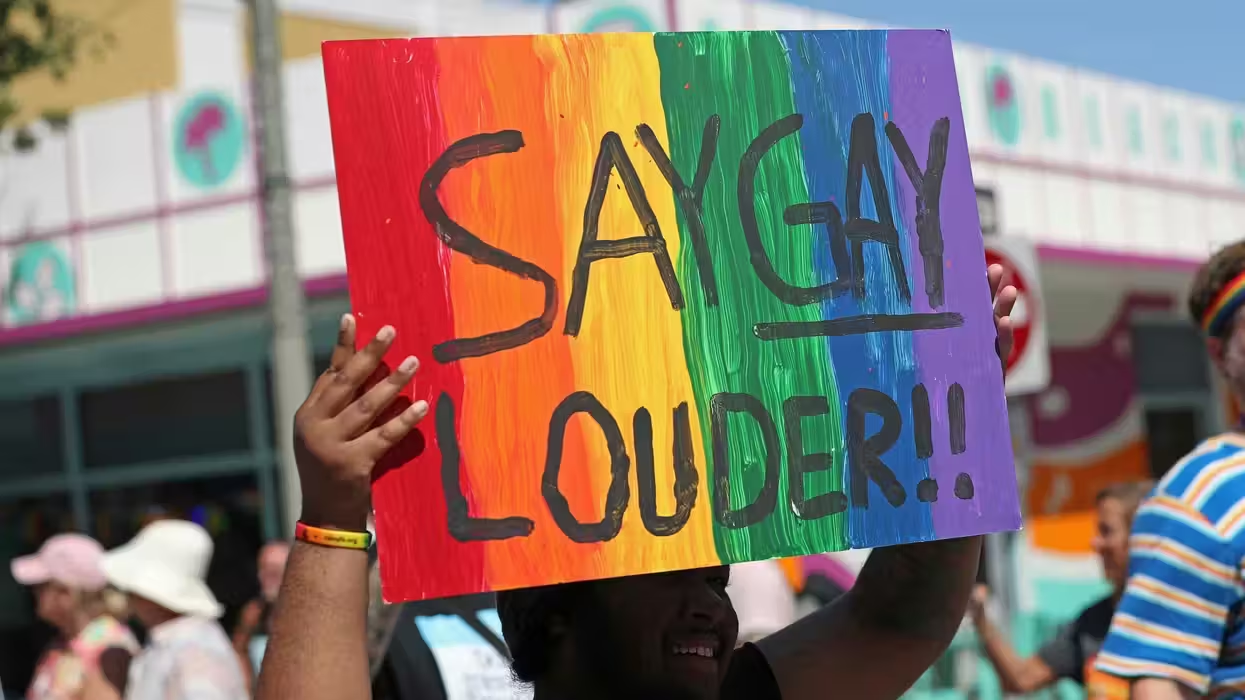
© 2025 Blaze Media LLC. All rights reserved.
Is America Headed for Yellowstone Super-Volcano Eruption Catastrophe?
January 25, 2011
"We have no idea how long this process goes on..."
"It would explode with a force a thousand times more powerful than the Mount St Helens eruption in 1980," the UK's Daily Mail warns. The world's largest super-volcano located underneath the United States' Yellowstone National Park is set to blow.

Spewing lava far into the sky, a cloud of plant-killing ash would fan out and dump a layer 10ft deep up to 1,000 miles away.
Two-thirds of the U.S. could become uninhabitable as toxic air sweeps through it, grounding thousands of flights and forcing millions to leave their homes.This is the nightmare that scientists are predicting could happen if the world’s largest super-volcano erupts for the first time in 600,000 years, as it could do in the near future.
Yellowstone National Park’s caldera has erupted three times in the last 2.1 million years and researchers monitoring it say we could be in for another eruption.
Scientists have reportedly watched as the super-volcano situated underneath northwestern Wyoming rose at a record rate from 2004-2008 -- an average of three inches every year. This rate of movement is more than three times greater than ever observed since such measurement records began in 1923.
Since 2008, the rate has slowed significantly,and the U.S. Geological Survey says there is "no evidence that another such cataclysmic eruption will occur at Yellowstone in the foreseeable future."
But recurrence intervals are neither regular nor predictable and a lack of data has kept geologists from putting any exact date on any potential eruption warning.
When the eruption finally happens it will dwarf the effect of Iceland’s Eyjafjallajökull volcano, which erupted in April last year, causing travel chaos around the world. ...
Robert B. Smith, professor of geophysics at the University of Utah, who has led a recent study into the volcano, added: ‘Our best evidence is that the crustal magma chamber is filling with molten rock.
‘But we have no idea how long this process goes on before there either is an eruption or the inflow of molten rock stops and the caldera deflates again’.
The Yellowstone Caldera -- or "cooking pot" -- sits atop North America's largest volcanic field. The most recent large blast from the Caldera happened an estimated 640,000 years ago and the most recent small eruption happened about 70,000 years ago.
‘Clearly some deep source of magma feeds Yellowstone, and since Yellowstone has erupted in the recent geological past, we know that there is magma at shallower depths too,’ said Dan Dzurisin, a Yellowstone expert with the U.S. Geological Survey at Cascades Volcano Observatory in Washington State.
‘There has to be magma in the crust, or we wouldn't have all the hydrothermal activity that we have.‘There is so much heat coming out of Yellowstone right now that if it wasn't being reheated by magma, the whole system would have gone stone cold since the time of the last eruption 70,000 years ago.’
Want to leave a tip?
We answer to you. Help keep our content free of advertisers and big tech censorship by leaving a tip today.
Want to join the conversation?
Already a subscriber?
more stories
Sign up for the Blaze newsletter
By signing up, you agree to our Privacy Policy and Terms of Use, and agree to receive content that may sometimes include advertisements. You may opt out at any time.
Related Content
© 2025 Blaze Media LLC. All rights reserved.
Get the stories that matter most delivered directly to your inbox.
By signing up, you agree to our Privacy Policy and Terms of Use, and agree to receive content that may sometimes include advertisements. You may opt out at any time.






